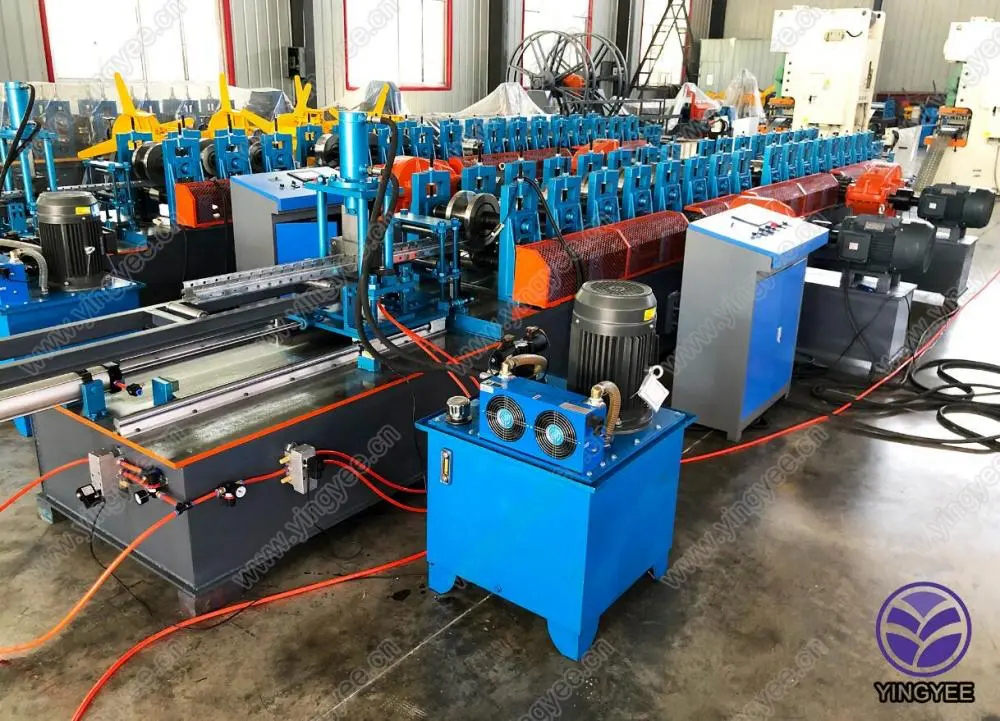
Roll Forming Truck Chassis A Streamlined Approach to Modern Vehicle Construction
The automotive industry is continuously evolving, with manufacturers looking for innovative methods to improve efficiency, reduce costs, and enhance the performance of their vehicles. One of the most pivotal advancements in vehicle design and manufacturing is the roll forming process, particularly for truck chassis construction. Roll forming offers a plethora of benefits, making it a popular choice for producing lightweight yet durable components that are essential in modern vehicles.
Understanding Roll Forming
Roll forming is a continuous bending process in which a long strip of metal, typically steel or aluminum, is gradually shaped into a desired cross-sectional profile through a series of rolls. This process not only allows for the production of complex shapes but also minimizes waste, as it utilizes metal sheets more efficiently than traditional machining methods. The roll formed metal can be further processed and assembled to create various parts, including truck chassis.
Benefits of Roll Forming in Truck Chassis Production
1. Weight Reduction One of the primary advantages of utilizing roll forming in truck chassis construction is the potential for significant weight reduction. Lighter trucks contribute to improved fuel efficiency and reduced emissions, which align with the industry's trend towards sustainability. Roll formed chassis are often made from high-strength steel or aluminum alloys, providing the needed durability without the extra weight.
2. Enhanced Strength and Durability The roll forming process creates a uniform grain structure in the material, which often results in superior strength characteristics compared to other methods of manufacturing. This is particularly important for truck chassis, which must withstand rigorous driving conditions and heavy loads. The structural integrity offered by roll forming translates to safer and more reliable vehicles.
3. Design Flexibility The versatility of roll forming allows manufacturers to produce a wide range of shapes and profiles tailored to specific design requirements. This flexibility means that engineers can create chassis that optimize aerodynamics, weight distribution, and other performance metrics without significant alterations to the production setup.

4. Cost Efficiency Roll forming is an efficient manufacturing process that can reduce labor and material costs. The continuous nature of the operation requires less manual intervention compared to traditional methods. Furthermore, the reduced scrap material generated during roll forming directly translates to lower material costs for manufacturers. These savings can be significant, especially when considering the high volume of parts needed in truck production.
5. Consistency and Precision The roll forming process is known for its ability to produce consistent and precise components. The inherent repeatability of the process ensures that each chassis meets strict tolerances required for vehicle assembly. This high level of precision not only improves assembly line efficiency but also contributes to the overall quality of the finished vehicle.
6. Reduced Lead Time With its streamlined production capabilities, roll forming helps shorten lead times from design to delivery. This agility allows manufacturers to respond quickly to market demands and customer preferences, which is essential in today’s fast-paced automotive industry.
Challenges and Considerations
Despite its many advantages, roll forming does come with some challenges. The initial setup costs can be high due to the need for specialized machinery and tooling. Additionally, the process is best suited for high-volume production, which may not be ideal for low-volume or custom applications. Manufacturers must carefully consider these factors when deciding whether roll forming is the right approach for their truck chassis production needs.
Conclusion
The roll forming process has revolutionized the way truck chassis are manufactured, offering significant advantages in terms of weight, strength, cost, and efficiency. As the automotive industry continues to prioritize sustainability and innovation, the adoption of roll forming techniques is likely to increase. By leveraging this advanced manufacturing method, truck manufacturers can produce vehicles that not only meet the demands of modern consumers but also align with environmental goals, paving the way for a more efficient and green future in the automotive landscape. The roll forming truck chassis represents an intersection of efficiency and effectiveness, exemplifying the potential for innovation within vehicle manufacturing.